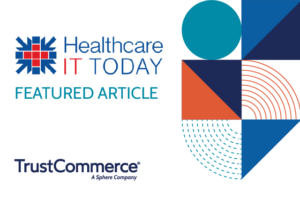Here are 3 Ways to Improve the Patient Billing Experience
Paying your medical bills has been a cringe-worthy experience for years. As a patient, you arrive to your provider’s office where you may or may not be asked to pay your co-pay because inconsistent collection of copays can be an issue due to insurance plan complications. If you need emergency care, sometimes an in-network hospital has out-of-network providers and the cost of care skyrockets. You receive an Estimation of Benefits (EOB) in the mail which tells you, “This is not a bill,” but you are not entirely sure what the complicated document means or why you received it in the first place. The list of grievances against the entire patient financial experience goes on and on. Frankly, patients are sick of it, no pun intended.
According to a recent report on healthcare experience, around 63% of patients would leave their current provider for an improved patient experience with billing. A poor payment experience weighed more heavily on patients than the total expense of the service, complex billing processes, or the absence of financing or payment plans. Put simply, patients are angrier about how hard it is to pay a large bill than the bill itself.
Here are just a few ways that any provider can improve the patient financial experience without disrupting practice workflows. Another bonus? These hacks also improve staffing efficiencies.
Communicate costs clearly
A recent Transunion analysis revealed that clear cost communication prior to or at the time of service led to a higher likelihood that patient payments would be received. This is especially true for younger patients who overwhelmingly want to be educated on their costs and any lower-cost alternatives. Patients who receive cost estimates for healthcare services can better make informed decisions and budget for large expenses. Cost estimation up front also allows healthcare providers to offer better financing options such as allowing patients to make deposits and set up payment plans.
Offer flexible patient payment options
This one is a no-brainer. By offering patients the ability to pay via multiple channels, such as in-person, via online portals, or even using a mobile wallet, providers collect more. Patients also respond well to payment opportunities presented at multiple points of the patient journey: pre-arrival, at time of service, and post-visit. Traditionally, patients are asked for a co-pay at the time of their appointment and are asked to pay any post-adjudication balances much later. This outdated paradigm is now being flipped on its head as savvy providers have learned patients want the patient financial experience to be flexible. The most effective collection of patient payments occurs when patients are offered the option to pay prior to their appointment, at the time of service, and via digital means after their visit.
Consider the following statistics regarding patient payment preferences.
- 54% of patients are interested in monitoring their upcoming provider payments digitally
- 43% are willing to store their preferred payment details with their providers
- 43% percent would automate payments to avoid repetitive manual data entry in the office and online.
According to Health Leaders Media:
- 32% of patients will pay their bill in less than five minutes when they receive it via secure text
- 30% will do so when they get the notice via a mobile app
- 25% will pay within five minutes when they get it via email
- 25% will do so when they get it through the patient portal.
There is just no arguing with those numbers. Offering flexibility in full patient payment solutions is essential to a healthier revenue cycle.
Consider dynamic account scoring
According to a recent HFMA article, “One of the more exciting developments in patient billing, particularly for providers that want to truly meet patients where they are, is the use of machine learning and artificial intelligence (AI) to continually improve the timing and means of individual patient outreach.” What are we talking about here? It’s called dynamic account scoring. Using AI and machine learning, dynamic account scoring develops highly personalized consumer profiles by pulling data from multiple sources, including third parties. These profiles identify a pattern of behavior specific to each patient so providers can tailor their communication, billing, and collection techniques to be as effective as possible. For example, it is possible to determine what time of day is best to send an eBill, or whether the patient prefers to pay via online portal or text.
Dynamic account scoring allows providers to deliver a customized and personal-feeling patient billing experience while also improving collection efficiency.
The recent pandemic caused a huge dive in revenue for hospitals and health systems due to reduced patient visits and collection difficulties. Investing in touchless digital payment experiences is the best way to retain patients while boosting revenue. Stop leaving patient dollars on the table due to a poor patient financial experience when just a few tweaks can make all the difference.






